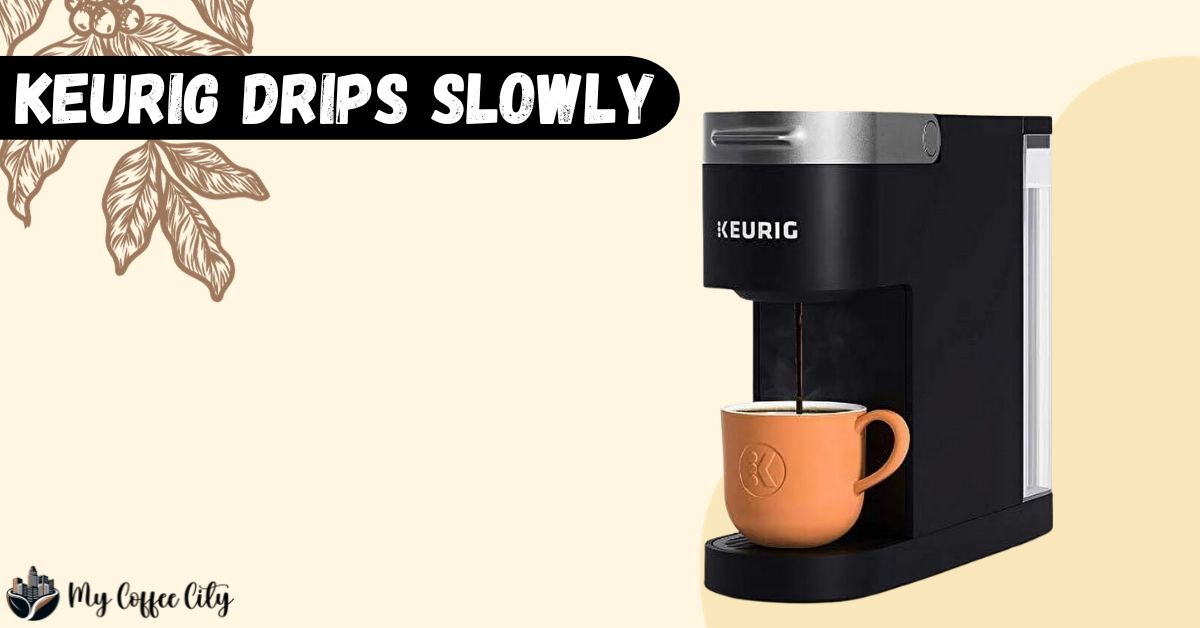Many Keurig users have noticed that over time, their machines start to slow down.
When your Keurig was brand new, it likely pumped about 1 inch of water out of the tank every 20 seconds—a benchmark for optimal performance. However, if you find that your Keurig dripping slowly or pumping less water than this, it’s a clear sign of a clog. This slowdown is often caused by a variety of factors, including a clogged nozzle, scale buildup within the machine, or an overused water filter. Each of these issues can impede the flow of water, leading to a slow drip.
The first line of defense is a simple descaling process, which involves running a descaling solution through your machine. This can help dissolve mineral buildup that often occurs in coffee makers. However, if descaling doesn’t solve the problem, don’t worry—there are other steps you can take.
In the following sections of this article, I will guide you through these troubleshooting steps in detail.
How To Fix A Keurig Slow Drip Issue
1. Clean the Water Line
At the bottom of your Keurig’s water tank, you’ll find a valve. Over time, this internal pathway can collect debris, leading to reduced water flow and a less-than-ideal brewing experience. Follow these manageable steps:
- Start by removing and emptying the water tank.
- Flip the reservoir over to locate the nozzle with the spring.
- Use something like the eraser end of a pencil to gently push the spring. If it moves easily, this indicates that your concern lies within the water line.
- Reattach the tank to your Keurig, filling it with a few inches of water.
- Use a turkey baster to suck up some water, then splash it directly into the nozzle where the tank meets the water line. This action helps flush out any obstructions in the water line and nozzle.
- Repeat this process several times until the water runs clear, ensuring a flawless and unobstructed flow.
After completing run a hot water cycle.
2. Clean Keurig Needles
Your Keurig uses two needles to brew your coffee. When you place a K-cup in the machine, these needles puncture it, allowing hot water to flow through and brew your coffee. In the long run, coffee grounds can get stuck around these needles, drying, and hardening, which leads to a blocked water flow and results in a slow drip.
Cleaning these needles is crucial, but caution is needed due to their sharpness.
Top Needle Cleaning
- Open your Keurig’s lid and find the three holes in the top needle.
- Carefully use a paper clip to gently clean out these holes, removing any trapped coffee grounds.
Bottom Needle Cleaning
- Take out the pod holder from your Keurig.
- Detach its bottom part to expose the exit needle.
- Clean around this needle with a paper clip to clear any obstructions.
For those with a Keurig 2.0, cleaning is easier with the orange brewer maintenance tool. If you don’t have this tool, it’s affordable to buy, or you can continue using the paper clip method.
Descale Your Keurig
Water, especially hard water with high mineral content, can leave deposits inside your Keurig. These mineral deposits can obstruct the water flow, leading to the slow dripping problem. Regular descaling is essential, even if you’re using a water filter, to keep your Keurig running smoothly. It’s advisable to descale your brewer every three to six months. However, if your water is hard, you might need to descale more frequently.
Keurig offers its own descaling solution, compatible with all its models. The Keurig descaling solution is available for purchase on its own or as part of a maintenance bundle that includes rinse pods and filters.
When you’re ready to descale:
- Obtain the Keurig descaling solution and read the instructions thoroughly.
- Follow the guided steps provided with the solution. These will typically involve running the solution through your machine in a specific manner to ensure thorough cleaning.
- If your machine has been in use for over six months without descaling, you may need to run the descaling process more than once to achieve optimal results.
What To Do If Keurig Still Dripping Slowly?
After implementing the steps we’ve discussed, if your Keurig is still dispensing coffee more slowly than it should, there’s one more potential solution to consider.
A component that can often be overlooked is the Needle Gasket. Over time, wear and tear or damage to the Needle Gasket can affect the performance of your Keurig, leading to issues like slow dripping. Replacing this gasket can be a cost-effective solution compared to buying a new machine.


